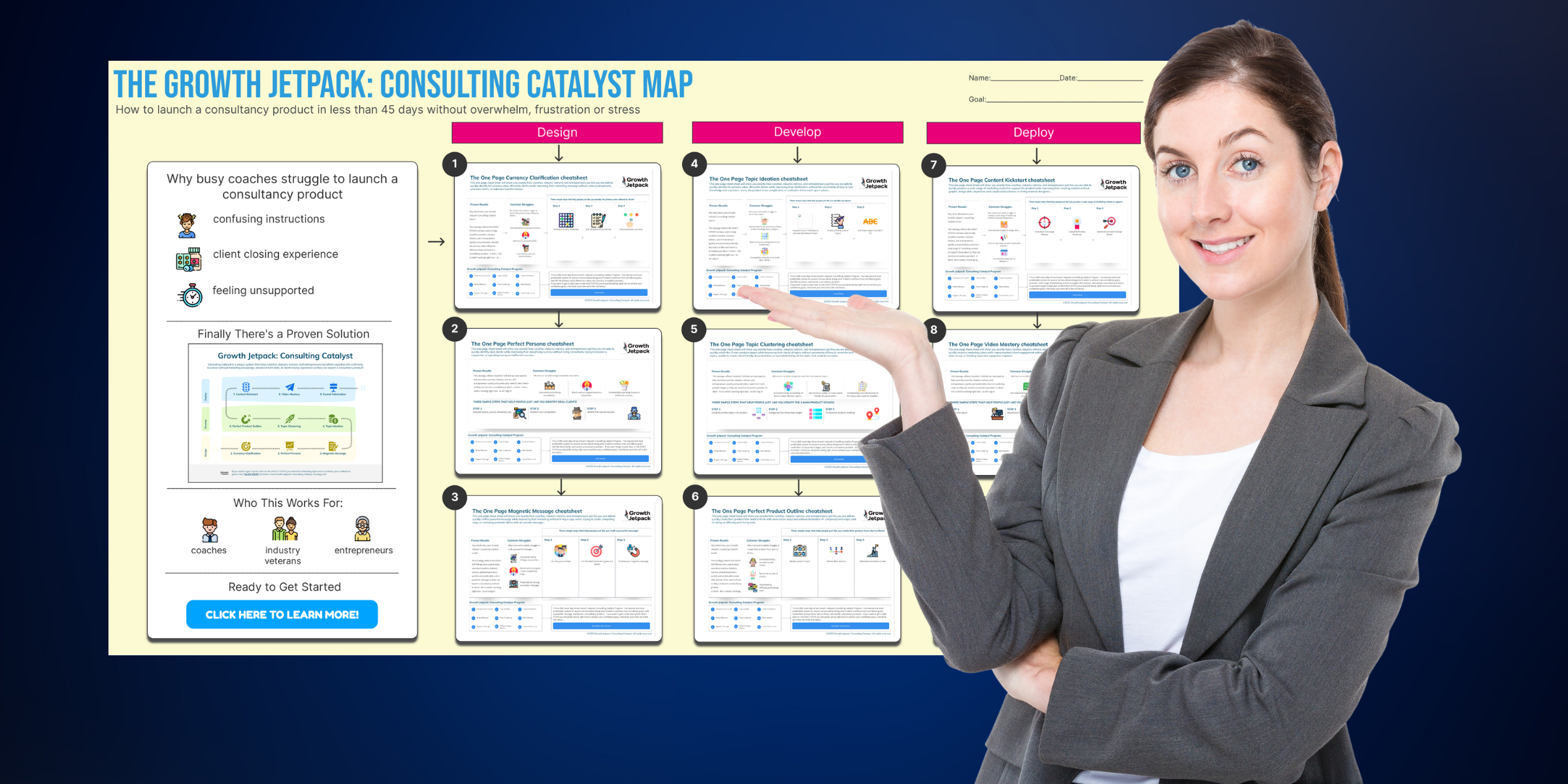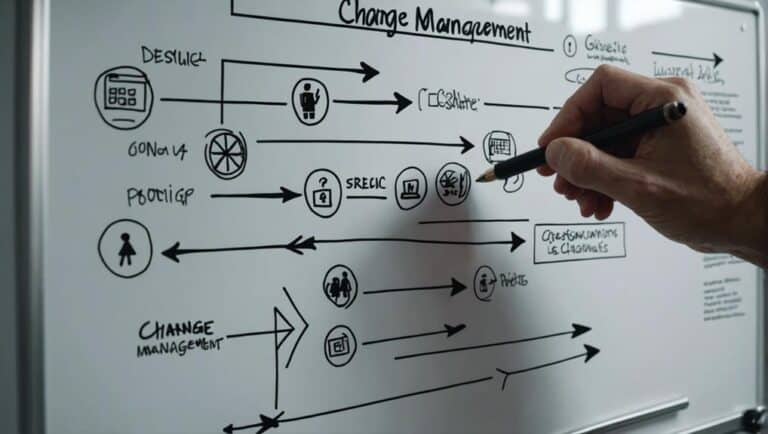Transitioning from being a change manager to becoming an independent consultant is an exciting and empowering journey. As a change manager, you have honed your expertise in driving successful organizational transformations, but now you want to take your career to the next level by venturing out on your own.
Becoming an independent consultant allows you to have full control over your professional path. You can choose the clients you work with, the industries you specialize in, and the specific change management services you offer. It is an opportunity to leverage your experience and skills to make a significant impact in helping organizations navigate through complex transitions.
Think of this journey as being like a ship setting sail into uncharted waters. You, as the captain, must navigate through unfamiliar territory, facing the challenges of the open sea. But remember, every great captain is defined not by smooth sailing, but by how they weather the storm.
Now, you might ask, what does the storm represent in this metaphor? Well, it can be the myriad of challenges that you might face in your journey – from defining your niche, developing a marketing strategy, to perfecting your sales techniques. But be not afraid, for these are but waves that can be ridden with the right knowledge and preparation.
Just as a ship needs a strong and durable hull, your change management consultancy needs a solid foundation. This foundation is built on your expertise in facilitating successful organizational transformations and your desire to make a significant impact. You are not just selling a service, you are offering a lifeboat to companies struggling to navigate the turbulent waters of change.
To successfully transition, it is important to establish your personal brand as a trusted change management consultant. This involves crafting a compelling value proposition, developing a strong online presence through a professional website and social media profiles, and building a network of industry contacts. You can also consider obtaining relevant certifications or further education to enhance your credibility.
Transitioning from being a change manager to an independent consultant requires careful planning, self-discipline, and a willingness to take calculated risks. However, the rewards of autonomy, fulfilment, and the opportunity to create your own success make it a worthwhile and fulfilling career move.
To explore this topic further we asked Mark Draper about his Growth Jetpack: Consulting Catalyst process. This step-by-step process helps transform your expertise into a thriving business.
ChangeStrategist.com (CS): Hi Mark, tell us a little about your background.
Mark Draper (MD): Hi, for many years I worked in the telecommunications and utilities industry. When I started at the company in 2002 it was a small sales company.
When I left in 2019, it was the UK’s largest independent business service provider of telecommunication, mobile, broadband, gas electricity and water products all on one bill.
As Head of Product Operations I’m sure you can imagine that meant I worked through a lot of changes!
CS: Are you a qualified change manager?
MD: No formal qualifications, it wasn’t the sort of company that offered that sort of development. However, my experience has given me a good understanding of the problems change managers face within business.
CS: Tell us about Growth Jetpack: Consulting Catalyst
If you’ve ever worked in a fast-growing company, you’ll know the feeling of wearing many hats. One day you’re developing a new product, the next you create sales and customer facing paperwork, the next you help write press releases and so on.
Since leaving, I’ve worked with experts in a number of sectors, for example a Pilates instructor, property expert, interior design consultant and most recently a change management consultant. They are all experts at what they do, but lack the knowledge and experience of being a ‘many hats’ person.
When becoming an independent consultant, they may not have the knowledge about messaging, identifying ideal clients, sales funnels, and other important aspects. However, they are great at working with clients.
Growth Jetpack is a process that consists of 9 steps. During this process, I work closely with my clients to determine the details about their product such as what it is, who it is for, and what they are offering.
A lot of the tasks sound simple, but the change consultant I recently worked with told me this has been a transformational process, one he’s repeated several times to really dig in to his offer.
In part this was also caused by a unique research element I offer. You provide me with details about your ideal client and I use AI to research and create an ideal customer persona, giving loads of information about the problems they face.
This element alone is worth thousands if you were to engage a marketing company, and every client I’ve had who spends time reading the report describes it as full of golden nuggets of information.
CS: How long does the process take?
MD: It’s all done remotely via regular video calls and can be done in under 45 days. How fast will depend on how quickly the client works through the process.
I’m not one for giving 2-hour lectures and leaving you to it; this is a very hands-on process that requires a lot of introspection from the client. I guide you through this process, hold you to account, ask tough questions and tell you when you’re on the right track or heading in the wrong direction.
CS: If someone want’s to learn more what should they do?
MD: The best thing to do is book a free discovery call. These only take around 20 minutes, and we’ll be able to see if this is the right fit for you. I’ll give you an embed code, so people can book directly from your site.
If you’d like to book a discovery call you can do so via this calendar:
Transitioning to Independent Consultant: A Guide for Change Managers
Let’s consider this further, you’ve got a good job but you feel you’re at the end of the road and want to strike out on your own. In today’s dynamic business landscape, the ability to navigate change has become more critical than ever.
Change managers play a vital role in driving successful organizational transformations, wielding their expertise in change management to ensure smooth transitions. There are many companies, such as the one Mark worked for, that are growing at a fast rate but don’t have any formal change management experience in place.
For those change managers who aspire to take their career to the next level and embark on a new path, the journey towards becoming an independent consultant can be both exciting and daunting.
The world of management consulting requires a unique blend of talents, expertise, and unwavering dedication. It calls for the ability to analyze complex problems, develop innovative solutions, and effectively communicate recommendations to clients.
Being a persuasive communicator is essential. Your ability to distil complex concepts into concise, compelling messages will influence clients and earn their trust. Exceptional presentation and interpersonal skills will enable you to build strong relationships with stakeholders at all levels of an organization. You must be a confident facilitator, capable of leading workshops and guiding teams through change initiatives.
Time management and resilience are non-negotiable. The demanding nature of consulting means embracing tight deadlines, long hours, and high-pressure situations. The work may be intense, but the satisfaction that comes from solving challenging problems and making a tangible impact on clients’ businesses is immeasurable.
To succeed in the management consulting business, you must possess an insatiable thirst for knowledge and a commitment to continuous learning. Staying abreast of industry trends and maintaining expertise in various sectors is paramount. Embracing new technologies and methodologies will keep you ahead of the curve and enable you to deliver cutting-edge solutions.
Above all, it takes a true passion for helping organizations navigate complex challenges and achieve their full potential. The rewards of management consulting are not just financial; they are also measured in the fulfillment derived from playing a pivotal role in shaping the success of clients and witnessing the positive transformations you facilitate.
Let’s take a look at the steps required to become a change manager.
Step One: Gaining Relevant Experience
Your first step on this daunting yet thrilling expedition is to accumulate relevant experience. This involves working in roles that expose you to change management processes and strategies. If you’re at the stage where you’d like to set up as a consultant it’s expected you’ve several years of experience already and can demonstrate this to prospective clients.
3 Key Requirements:
- Willingness to learn and gain experience.
- Solid understanding of change management principles.
- Ability to navigate workplace dynamics.
3 Biggest Problems:
- Limited opportunities for exposure.
- Others set your workload.
- Balancing learning with job performance.
Step Two: Expand Your Education
Like a mountaineer gaining vital survival skills, expanding your education equips you with the knowledge you need to guide organizations through change. We’re not just talking about change management related activities; to strike it out on your own you need to get to grips with areas such as sales and marketing, which is where the Growth Jetpack course comes in.
3 Key Requirements:
- Gain an understanding of sales and marketing basics.
- Continuous learning to stay updated on change management trends.
- Critical thinking skills.
3 Biggest Problems:
- The high cost of education.
- Time management between work, studies, and personal life.
- Keeping up with rapidly changing trends.
Step Three: Building a Professional Network
Building a professional network is akin to forming a team of experienced climbers to support your ascent. These connections can provide valuable opportunities, advice, and support.
3 Key Requirements:
- Excellent interpersonal and communication skills.
- Regular attendance at industry events.
- Active participation in online professional forums.
3 Biggest Problems:
- Finding support outside existing networks.
- Building meaningful, reciprocal relationships.
- Maintaining regular contact with network members.
Step Four: Developing a Unique Skill Set
To stand out in a crowded market, you must develop a unique skill set. This is your climbing gear, separating you from the amateurs. Mark suggests focusing on a single ideal target client and go deep into understanding the problems they face and the transformation you can facilitate.
3 Key Requirements:
- Specialized knowledge in a specific industry.
- Ability to apply change management principles creatively.
- Strong leadership and people management skills.
3 Biggest Problems:
- Identifying a unique skill or area of expertise.
- Clearly expressing the value you can offer.
- Demonstrating your unique skills to potential clients.
Of course becoming a successful change management consultant requires a core set of skills and experience. Having a solid foundation in organizational psychology and a deep understanding of human behavior is crucial.
Honing one’s project management and communication skills is essential for effectively guiding entities through organizational shifts.
Lastly, possessing experience in change management methodologies and practical implementation strategies is paramount for achieving desired outcomes. Overall, adapting to change, being flexible, and continuously learning new techniques are key factors in how to succeed as a change management consultant.
Step Five: Gaining Client Experience
This is where you test your skills, like the first climb before a major expedition. Working with clients allows you to apply your knowledge and refine your approach. Once you’ve clearly identified who you can help and how you can help them, you can market your services and gain your first clients.
3 Key Requirements:
- Ability to attract and retain clients.
- Excellent problem-solving skills.
- Ability to deliver tangible results.
3 Biggest Problems:
- Finding your first client.
- Managing client expectations.
- Dealing with difficult clients.
Step Six: Establishing a Business Structure
Like setting up base camp before the final climb, establishing a business structure is a crucial step in your journey. This gives your consultancy a solid foundation to grow.
3 Key Requirements:
- Understanding of business management principles.
- Ability to handle financial and legal aspects of running a business.
- Ability to create effective business processes.
3 Biggest Problems:
- Navigating complex legal and financial systems.
- Creating efficient business processes.
- Balancing business management with client work.
Throughout your journey, remember to anchor positivity to each step. When you think of gaining experience, let your mind associate it with a sense of accomplishment.
When building your network, associate it with forming lasting friendships. This way, each step becomes a source of joy, propelling you towards your goal: becoming an independent change management consultant.
Remember, this journey may be challenging; you can gain help from others to act as guides but ultimately it is your adventure. Embrace it. Own it. Conquer it.





